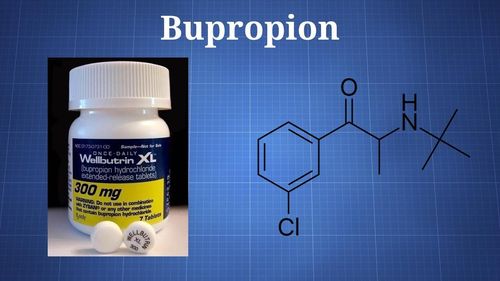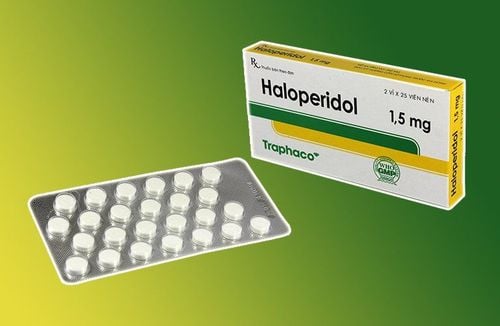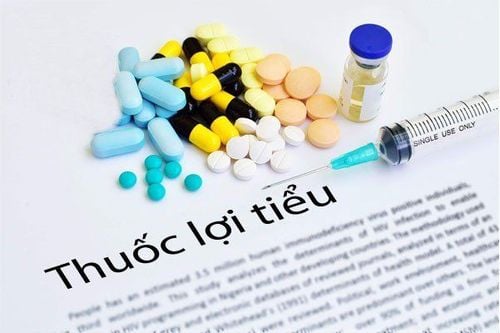This is an automatically translated article.
Mirastad 30 mg is an antidepressant, commonly used for people with major depression. When using the drug, patients need to strictly follow the instructions on how to use as well as the dosage of the specialist to get the best benefit.1. What is Mirastad 30?
Mirastad 30 is a medication for depression, used for patients experiencing severe depression. The drug brings a calming effect to the patient quickly through the dangerous depression, while helping to protect the body and ensure the best health for the patient.
Mirastad 30 mg is prepared in the form of film-coated tablets with packaging of 2 blisters x 14 tablets. Each Mirastad 30 tablet contains the following specific ingredients:
Main ingredients: Mirtazapine with a strength of 30 mg. Other active ingredients: Corn starch, lactose monohydrate, colloidal anhydrous silica, hydroxypropyl cellulose – M, macrogol 6000, hypromellose 6 cps, magnesium stearate, red ferric oxide / yellow iron, caramel color and titanium dioxide just enough for one tablet.
2. Indications and uses of Mirastad 30 mg
2.1 Indications for use of mirastad 30 mg Mirastad 30 mg is usually indicated for use in cases of severe depression.2.2 Uses of the drug Mirastad 30 mg Mirtazapine is a centrally active presynaptic a2 antagonist, which plays the role of increasing serotonin and noradrenalin neurotransmitters, helping to fight major depression and taking effect after only 1 - 2 days. 2 weeks of use. The increase in serotonin neurotransmission is mainly through specific 5-HT1 receptors because the 5-HT2 and 5-HT3 receptors are blocked by the active ingredient mirtazapine.
Mirtazapine has 2 enantiomers that are both effective against depression, the R (-) enantiomer blocks 5-HT3 receptors while the S (+) enantiomer blocks the a2 and 5-HT2 receptors. . As a result, the drug helps patients to improve symptoms such as mood swings, motor inhibition, melancholy, etc. In addition, the H1-antagonist activity of mirtazapine has a close relationship with specific characteristics. sedation of the drug.
Overall, Mirtazapine tends to be very well tolerated by the body. It has almost no anticholinergic activity and has no effect on the cardiovascular system.
Mirtazapine has 50% bioavailability, is rapidly absorbed and reaches peak plasma concentrations after only 2 hours. Of these, the majority of Mirtazapine is bound to plasma proteins (accounting for 85%).
The drug is extensively metabolised and excreted in the urine and faeces within a few days. The biotransformation of Mirtazapine usually involves oxidation, demethylation and conjugation.
The mean half-life of Mirtazapine is usually within 20-40 hours, sometimes up to 65 hours. According to research, the half-life of the drug in young men is often shorter than in other people. In addition, the concentration of the drug also reached steady state after 3-4 days and there was no sign of further accumulation after that. The clearance of mirtazapine may be reduced in patients with hepatic/renal impairment.
3. Dosage and how to use Mirastad 30mg
3.1 Dosage of Mirastad 30 mg The dose of Mirastad 30 mg will be determined based on the health status and age of each subject, including:Children: Mirastad 30 mg is not recommended for children. It has not been proven to be effective and safe. Adults: Oral starting dose is 15 mg/day or 30 mg/day. Often, patients need to increase the dose to achieve an optimal clinical response. The effective daily dose for adults with major depression is 15 to 45 mg. Elderly: Take the same recommended dose as adults. However, close monitoring is required when increasing the dose to ensure safety and to find a satisfactory response. Due to the mean half-life of 20-40 hours, Mirastad 30 is suitable for once-daily dosing. Patients should take the drug only once in the evening before going to bed or divided into 2 equal doses and used during the day (eg morning and evening).
Patients with major depression should continue treatment until symptoms disappear within 4-6 months, then gradually discontinue the drug. For a positive response, patients should take the full dose for 2 to 4 weeks. If response is inadequate, the maximum dose can be adjusted. In the event that there is still no response within 2 to 4 weeks of taking the drug, the patient should discontinue treatment.
3.2 How to take Mirastad 30 mg The drug Mirastad 30 mg is usually taken orally. Patients should take the drug exactly as directed by the doctor about the dose and time to take the drug to achieve the best effect. Ideally, the drug should be taken with filtered water, avoid drinking with carbonated water, soft drinks or other stimulants because this can reduce the effect of the drug.
4. What to do in case of overdose or missed dose of Mirastad 30 mg?
For the case of drug overdose, the patient is likely to experience symptoms of disorientation, increased blood pressure, tachycardia, etc. At that time, the patient should be taken to a medical center soon for treatment. Treatment with activated charcoal method, gastric lavage, ECG monitoring and treatment of related symptoms.
In the event of a missed dose of Mirastad 30, the patient should take the dose as soon as he remembers. If it is too close to your next dose, you should skip the previous dose and continue taking the medicine at the same schedule. Avoid making up for it or taking a double dose as this can lead to an overdose.
5. Some notes when using Mirastad 30 mg
5.1 Contraindications to use Mirastad 30 mg for which case? Mirastad 30 mg should not be used in the following cases:People who are allergic to Mirtazapine or hypersensitive to any of the ingredients / excipients in the drug. People who are taking monoamine oxidase inhibitors concurrently within the previous 10 days. Pregnant/lactating women. Children and adolescents < 18 years old. 5.2 Side effects when using Mirastad 30 mg During the use of Mirastad 30, patients may experience some of the following undesirable side effects:
Drowsiness (occurs within at least the first week of taking it). medicine). Weight gain or increased appetite. Mania occurs. Constipation, dry mouth, epigastric pain, increased serum cholesterol. Vasodilation, frequent urination, joint pain. Shortness of breath or flu-like syndrome. Postural hypotension, muscle tremors, tremors or convulsions. Body edema or rash. Eosinophilia, agranulocytosis/reduction, aplastic anemia (acute bone marrow suppression). Increased transaminase activity in serum. Extrapyramidal syndrome, hyponatremia. When any of the above symptoms appear, the patient should immediately report to a specialist for diagnosis and appropriate treatment.
5.3 Interactions of Mirastad 30 mg with other drugs Mirastad 30 mg may interact with some of the following drugs or other substances:
The combination of warfarin and mirastad 30 mg may increase the INR. MAO inhibitors (should be given at least 14 days apart). The combined sedative mirastad 30 mg easily increases the sedative effect. Drugs that prolong the QTc interval (antibiotics, antipsychotics) when combined with mirastad can cause cardiac arrhythmias and prolong the QT interval. Antifungal Azols, cimetidine, erythromycin,... can increase the toxicity and concentration of mirtazapine. Alcohol taken with mirastad may increase the neuroleptic effect. In order to avoid unnecessary drug interactions, patients need to inform their doctor about all drugs or supplements that they are taking.
5.4 Some Precautions while taking Mirastad 30 mg Mirastad 30 mg may worsen depression and increase suicidal ideation in certain patients. In addition, the drug can also cause bone marrow suppression, leading to symptoms of infection, fever, or stomatitis.
For patients with epilepsy, liver failure, kidney failure, high blood pressure, diabetes or organic brain syndrome, close monitoring is required when using mirastad 30 mg. In addition, patients with prostate enlargement or narrow-angle glaucoma should be cautious when taking mirastad 30.
If there is jaundice, the patient should stop using the drug immediately. For people with manic-depressive psychosis who are in a depressive phase, treatment with Mirastad 30mg can cause the disease to turn into a manic phase.
Although Mirastad 30 mg is not addictive, patients should avoid stopping suddenly because it can cause nausea, anxiety or dizziness. Ideally, you should stop taking the drug slowly to let your body adapt.
On the other hand, Mirastad 30 mg can also increase the symptoms of sitting / lying still. Moreover, the drug also contains lactose, so people with glucose-galactose malabsorption or lapp lactose deficiency should not use mirastad.
Mirastad has a shelf life of 24 months from the date of manufacture. Patients should store the medicine in a cool, dry area, away from direct sunlight. The ideal drug storage temperature is no more than 30 degrees Celsius. In addition, you need to keep the medicine in a special storage area, out of the reach of small children or easy contact with family pets.
Above is important information about Mirastad 30. However, to ensure safety before using you should consult your doctor.
Please dial HOTLINE for more information or register for an appointment HERE. Download MyVinmec app to make appointments faster and to manage your bookings easily.













